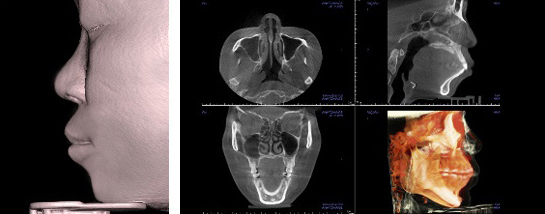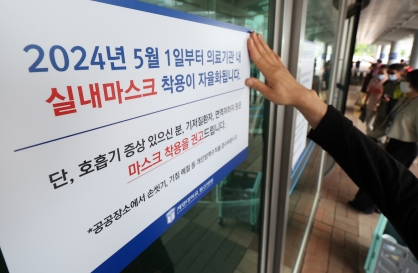Rhinoplasty with 3-D scan: Safer surgery for nasal problems
By Korea HeraldPublished : March 28, 2013 - 20:21
Interest in “two-jaw operation” has been steadily growing among those who have bimaxillary protrusion, a dentofacial deformity commonly found among Asians where the upper and lower incisors emerge forward, making the teeth and lips protrude. The operation, however, is a surgical method neither designed to correct the facial distortion nor to improve a person’s facial image. It was actually devised to treat diverse functional inconvenience such as the misalignment of the teeth.
A facial contouring surgery is performed often to surgically correct the bimaxillary protrusion, but many find it difficult and painful since it is a type of bone surgery. The facial deformity can be improved through orthodontics, but it requires a long period of time and consistent care.
A facial contouring surgery is performed often to surgically correct the bimaxillary protrusion, but many find it difficult and painful since it is a type of bone surgery. The facial deformity can be improved through orthodontics, but it requires a long period of time and consistent care.

Rhinoplasty, a surgery that reshapes the nose, has been grabbing attention, as an alternative to the two procedures.
The surgery alters the size or shape of the nose by using the patient’s soft bone, rearranges soft tissue surrounding the nose, and extends the shortened philtrum. The surgery not only improves the nose aesthetically but also makes the lip area less protruded.
“Rhinoplasty can have more a precise result, minimize side effects and complete a harmonious and balanced nose shape for patients,” said Kim Gui-rak, a doctor and a director of the rhinoplasty center at Braun Plastic Surgery.
“It is important to find a proper nose shape for each patient rather than recommending just a big and pretty nose,” Kim said.

Unlike other surgeries, rhinoplasty demands a three-dimensional approach. Cartilage of the nasal septum, alar cartilage and nasal bone form the three-dimensional structure. It is difficult to understand such complicated nasal structure by just looking at its external condition or having a simple X-ray.
In order to solve the problem, Seoul’s Braun Plastic Surgery uses a 3-D CT scan. With the 3-D CT scan, the hospital precisely checks the condition of the cartilage of nasal septum and the bone, Kim said
“To have satisfactory surgery, patients need to pick a hospital that has experienced doctors as well as a state-of-the-art 3-D CT equipment,” he added.
By Cho Chung-un (christory@heraldcorp.com)
-
Articles by Korea Herald




![[Music in drama] Rekindle a love that slipped through your fingers](http://res.heraldm.com/phpwas/restmb_idxmake.php?idx=644&simg=/content/image/2024/05/01/20240501050484_0.jpg&u=20240501151646)

![[New faces of Assembly] Architect behind ‘audacious initiative’ believes in denuclearized North Korea](http://res.heraldm.com/phpwas/restmb_idxmake.php?idx=644&simg=/content/image/2024/05/01/20240501050627_0.jpg&u=20240502093000)



![[KH Explains] Will alternative trading platform shake up Korean stock market?](http://res.heraldm.com/phpwas/restmb_idxmake.php?idx=644&simg=/content/image/2024/05/01/20240501050557_0.jpg&u=20240501161906)








![[Today’s K-pop] Stray Kids go gold in US with ‘Maniac’](http://res.heraldm.com/phpwas/restmb_idxmake.php?idx=642&simg=/content/image/2024/05/02/20240502050771_0.jpg&u=)